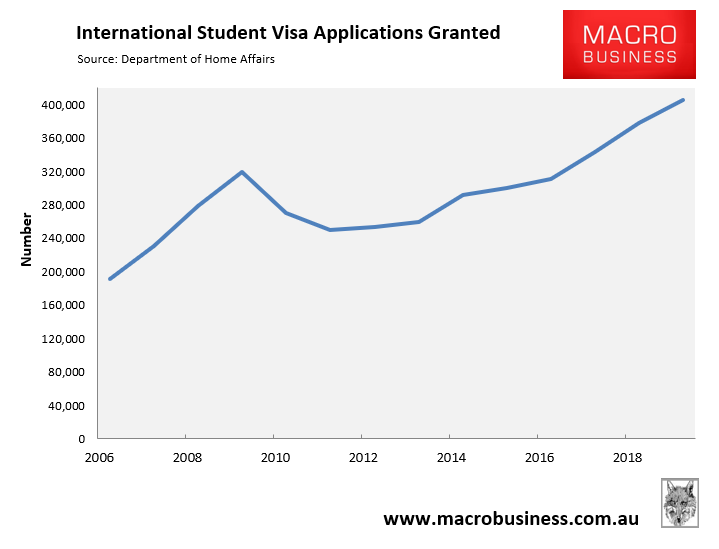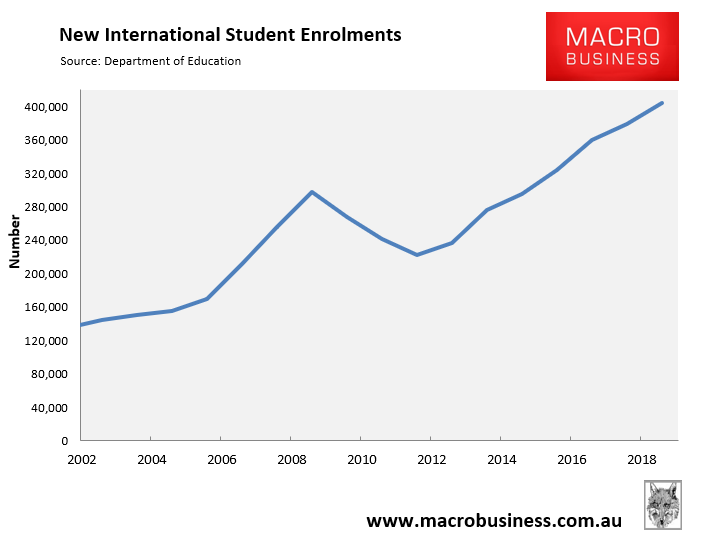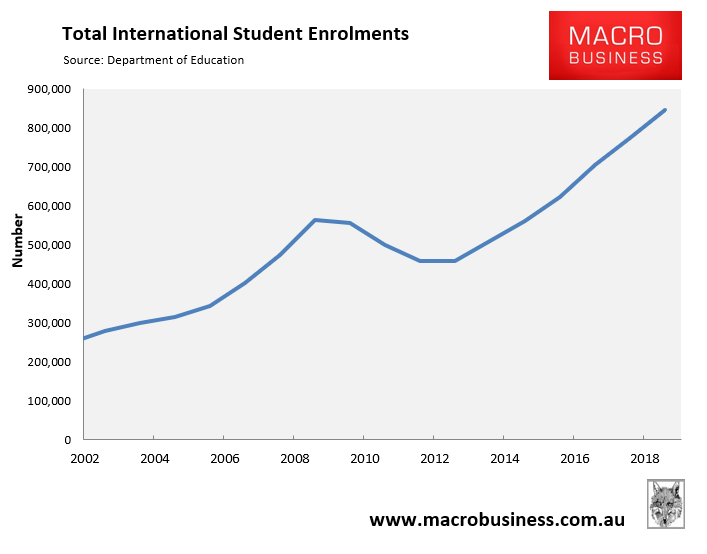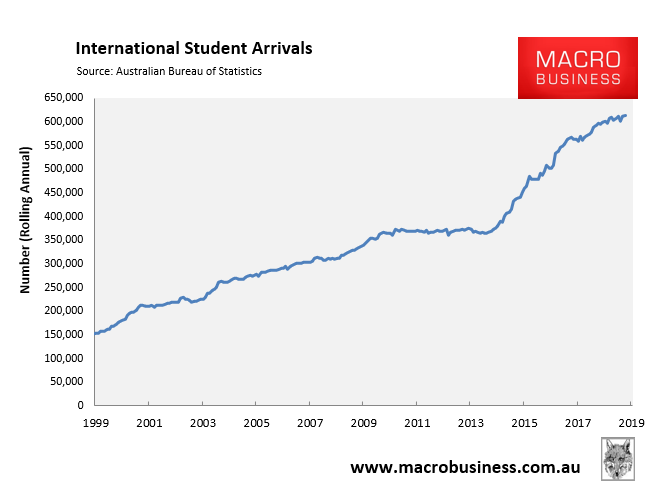A superficial glance at Australia’s international student numbers reveals an industry in rude health.
The number of international student visa applications granted – a leading indicator for new enrolments – hit an all-time high 406,000 in the year to June 2019:

The number of new international student enrolments at Australia’s education institutions also hit a record high 405,000 in the year to August 2019:

Meanwhile, total international student enrolments hit a record high 846,000 in August 2019:

Whereas the Australian Bureau of Statistics this week reported that international student arrivals hit a record high 614,000 in the year to September:

Therefore, the aggregate international student data unambiguously shows an industry in the midst of an unprecedented boom.
However, there are storm clouds building on the horizon, according to Andrew Norton, Honorary fellow at the University of Melbourne:
Given enrolment and visa trends, total international student enrolments will increase in the short term. But there are many concerns about this industry, including English language standards, cheating, soft marking, Chinese political interference, university financial over-reliance on international students, labour market exploitation of students, and poor graduate outcomes.
There are also broader issues of international students driving up migration numbers, as well as questions of whether we want a large proportion of the population living with limited political and welfare rights.
Population issues contributed to a rule change to attract international students away from congested big cities to regional and minor city locations. I expect further regulatory changes and market reactions to international education issues to eventually cause a decline in numbers.
Added to the above headwinds are the following:
- the federal government’s 30,000 reduction in the permanent migrant intake, which has reduced the probability of transitioning from a student visa to permanent resident, thereby making Australia a relatively less attractive destination for international students;
- the Department of Home Affairs’ labelling of student visa applications from India, Nepal and Pakistan as “high-risk”, meaning they are now required to meet higher financial and English-language thresholds to study in Australia; and
- the United Kingdom’s announced extension of post-study work rights to two-years, thus matching Australia’s and removing our competitive advantage over international students.
Given the momentum in visa applications and new enrolments, it will take some time for overall student numbers to fall. But fall they will.

